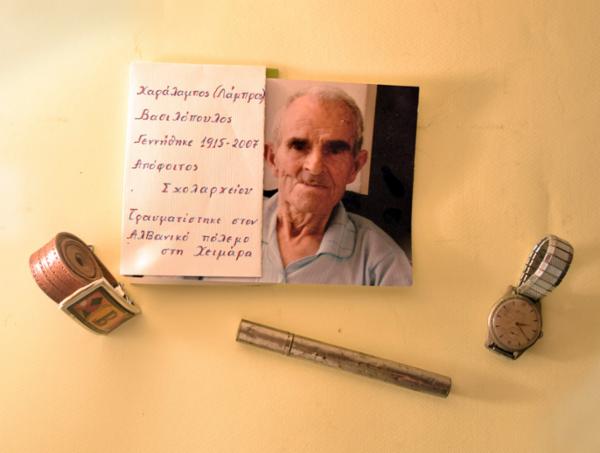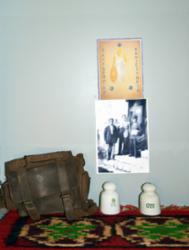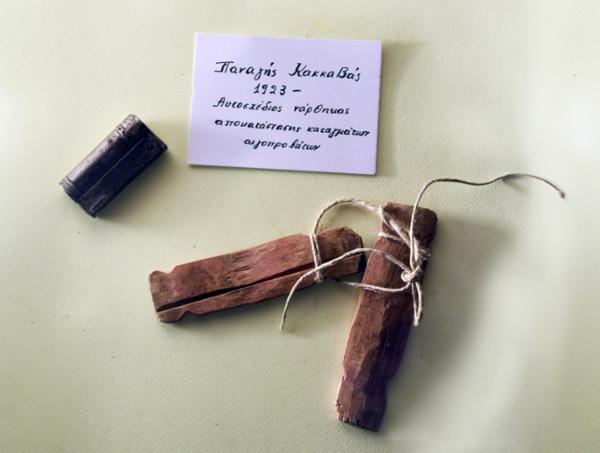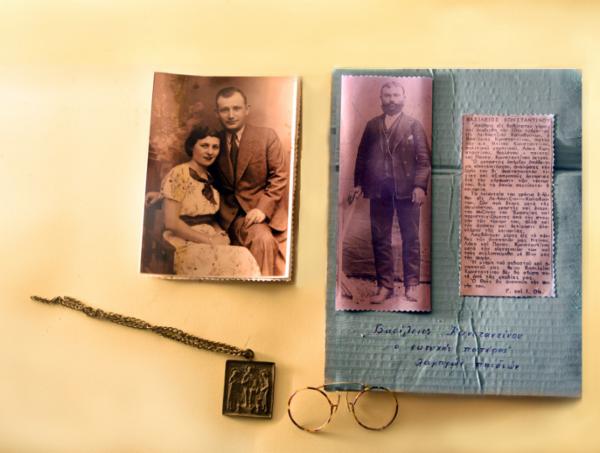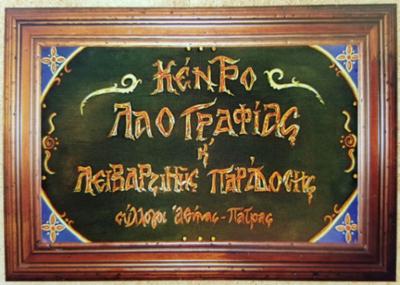
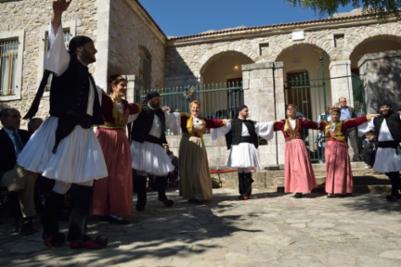 The Centre for Folklore & Livartzine Tradition - KE.LA.LEI.PA. - which has been characterized as one of the three best "Thematic" Folklore Museums of the country, is housed in the magnificent building constructed in 1856 by a donation of the great Livardzian benefactor Spyridon Sakellariou or Spiliotakis and is a copy of the Sinaia Academy of Athens.
The Centre for Folklore & Livartzine Tradition - KE.LA.LEI.PA. - which has been characterized as one of the three best "Thematic" Folklore Museums of the country, is housed in the magnificent building constructed in 1856 by a donation of the great Livardzian benefactor Spyridon Sakellariou or Spiliotakis and is a copy of the Sinaia Academy of Athens.
Even after the closing ceremony, as a primary school in June 2011, this famous intellectual institution (Greek, School and multi-seat primary school), with its transformation into a folklore centre, continues its mission.
THE LIVARTZINO HOUSE
1800-1960
As traced in the remains that time has respected and memory, sensitivity and nostalgia have retained (...)
The objects and furniture were only "washed" and placed as they were given, without embellishment. The "Livartzino House" is presented "alive" and not as a monument.
The setting up took about two years. Clothes, rubbish and bedding were collected.
Tools, utensils, looms and frames were donated. Huts were walked in, huts were examined, and Palladian houses were examined from all over the Livardzin area, from Apanacres to Laco and from Elukos to Mokro.
At the recording, hearts were tightened, eyes were teared. Every footstep and man, every man and story became gigantic as myths.
Experts and authorities ranked the seasons and set the course of history.
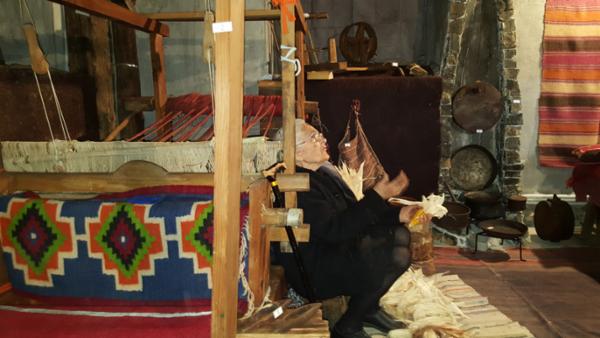 First appears the one-room and parallelogram house. Its openings were small, mainly for protection from winters and invaders. The interior has two levels. In the low trodden earth, livestock and tools of daily economy. In the other, the higher one, leading to a scaffolding 60-70 cm high. On a stepladder sleeps the androgynous hamo, bedding children and elders. The latter closer to the ashtray for warmth.
First appears the one-room and parallelogram house. Its openings were small, mainly for protection from winters and invaders. The interior has two levels. In the low trodden earth, livestock and tools of daily economy. In the other, the higher one, leading to a scaffolding 60-70 cm high. On a stepladder sleeps the androgynous hamo, bedding children and elders. The latter closer to the ashtray for warmth.
The ashtofurni was the hearth and the cookhouse, a pit in the floor or a recess in the stone wall, without a chimney. The smoke was drawn upwards and escaped through the slots and gaps in the slab - slate - which from the fifties ('50) onwards were replaced by tiles.
The loom and a couple of wooden chairs were the rudimentary furnishings. Clothing and litter were stained in "yuks" . Physical necessities were done in the "outhouse" next door about fifteen yards out and beyond the main house. The apatos was small, just enough to be served, the roof was supported by slab beams and the floor was made of boards with an opening, according to Turkish custom.
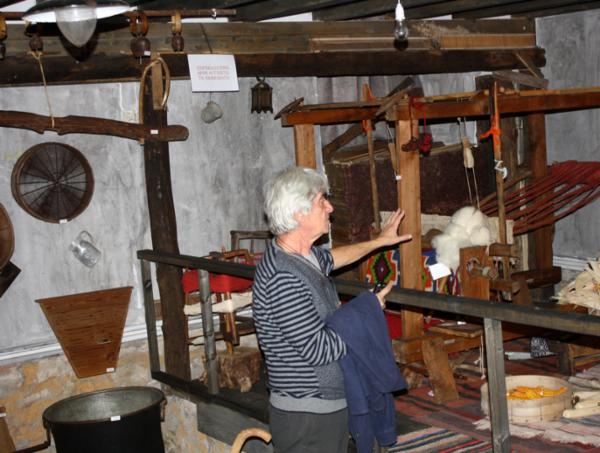
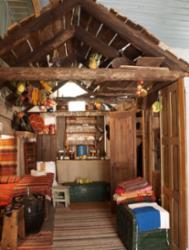
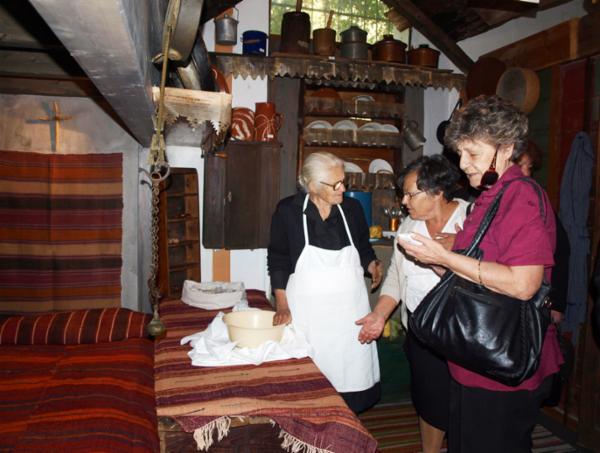
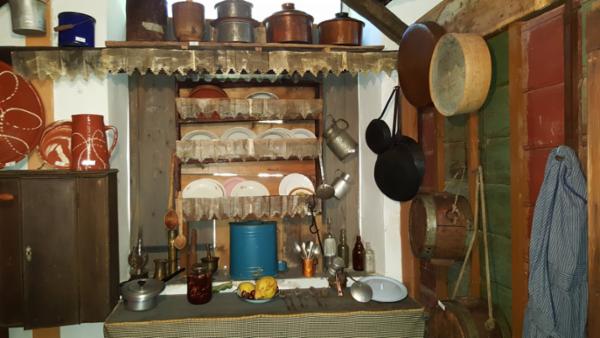
Most of the village lived in this house until the two and three decades of the 20th century.
A little earlier, the foreignness inside and outside created conditions for improvement. This was helped by a certain normalization of national affairs - the Trikoupis period.
The result: the one-room house was "egg-shaped", after the whole house was "floored" and separated from the backyard, with the addition of a room, necessary for the daily cooking, the storage of dishes and gravel, but also to avoid cooking outside.
The one-room is now a two-room. All the necessities for the latra are gathered in it, the flour cassettes and the stroka cassettes. On these, on good bedding, the "strangers" sleep well: guests, passers-by, ministers, relatives and the remainder of the old people.
The cupboard and later the lantern with a couple of shelves kept the necessities, which somehow were also in line with the progress of the place.
Late 19th century
The house has progressed in its adaptation . The one-room house became "two-storey". The animals are separated from the people. The levels are connected by a staircase, the cataract, which connects the backyard to the house. The crib, the room for the pets, is formed in the lower floor and beyond it the weigons and tools. The kitchenette houses the furnace wood (…)
Life goes on and the evolution of the Livartzino house continues. By the first decades of the 20th century it has acquired its 'winter', an almost square space. The fireplace now has a chimney and is made by local craftsmen.
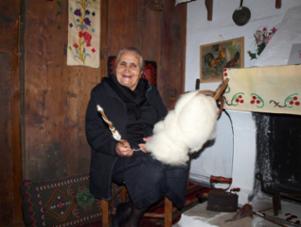
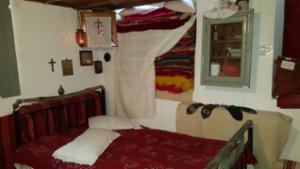 The husband and wife sleep on an iron bed with bedding while the children continue to sleep on the floor. The mattresses of the bed, made of cloth, usually of sailcloth, are still stuffed with "boisio" - husks of corn and freshly squeezed beans.
The husband and wife sleep on an iron bed with bedding while the children continue to sleep on the floor. The mattresses of the bed, made of cloth, usually of sailcloth, are still stuffed with "boisio" - husks of corn and freshly squeezed beans.
The yuccas are skilfully covered with embroidered covers. (...) The shofras - the low wooden table - is banished in front of the fireplace and the table, wooden with a drawer at any rate, on one side of the wall serves every need of the family.
The wovens, carpets and ch(i)rams are spilling out of the yuks and adorning the wintry. Frames depicting Western-style lithographs (forests, rivers, deer and Austro-Helvetic snowy landscapes) make an appearance and compete with the woven pandas on the walls with exuberant audacity. The iconostasis with the candle is put in the corner and decorated with white cloth embroidered usually with a cross.
The winter room is now a bedroom but also a reception area that keeps the residents and strangers in its clutches.
The coziness lasts until the invasion of the formica and the replacement of the basil in the window by the portable picnic table to introduce the village to the country's foreign way of entertaining.
THE "SALA" OF THE LIVARTZINO HOUSE
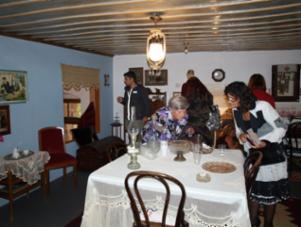
Some houses, with the rise of the bourgeoisie in the country, which also aided the economic development of the village, acquired before the end of the 19th century its "sala". Foreign furniture, Viennese-style chairs, bourgeois sofas (1870) carved or embroidered with bronze, chests with dates and initials, chests of drawers and wardrobes with modern elements, iron alloy beds decorated with an aesthetic that unconsciously sought to marry tradition with the evolving national aesthetics of weaving, embroidery and knitting.
WEAVING ROOM
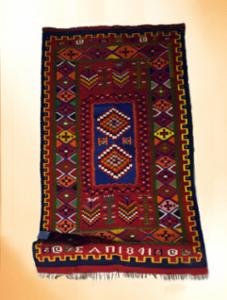
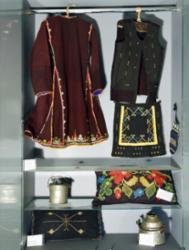 In the Weavers' Hall, the weaving art, both technical and aesthetic, of the Levantine housewife is highlighted. The many donations of the residents allowed the Association's goal to be fulfilled, which was to demonstrate not only the skill in the loom of the Livardzine woman, but also the continuity of the Greek soul and consciousness, from Illyria to Crete.
In the Weavers' Hall, the weaving art, both technical and aesthetic, of the Levantine housewife is highlighted. The many donations of the residents allowed the Association's goal to be fulfilled, which was to demonstrate not only the skill in the loom of the Livardzine woman, but also the continuity of the Greek soul and consciousness, from Illyria to Crete.
The weaver, isolated in Livardzi, is guided by the same pulse and the same criteria of choice of colours, designs and natural dyes.
The Greek aesthetic is pervasive and continuous, unaffected by the distances, altitudes, social and economic differentiations of the individual geographical units of the Homeland.
Creme blossom, walnut leaf, saffron, crocus, chai, cherry are the vegetable dyes common to traditional Greek weaving.
The designs are common, the colour combination common. Great proof of this is the exhibition in the hall, side by side, of weavers from Florina and Livardzi, knitted blankets from Livardzi and Naxos.
The weavings presented cover the period from the beginning of the 19th century to 1970, so that with the richness of the technique, the lack of "capo" (background) in the older ones, which recedes over time, the social classes and the gradual "decline" are noted.
The noblewomen had time, to embroider plumage. The poor woman, who worked twenty-four hours a day, wove for her own needs the simplest geometric designs taken from the world of plants...
HALL OF MEMORIES
The Association's decision to create a room where photographs of Livartzines, living and non-living, with their personal objects or tools of their labour next to them, will be displayed, led to the characterization of the "CENTRE FOR LAGRAPHY AND LIVARTZINE TRADITION" as one of the three best "Thematic" Folklore Museums of the country. This is because through this hall, the real social structure, the real economic situation of the inhabitants, the cultural infrastructure of the Livartzinos character is highlighted.
This character, perhaps because of the constant refuge in Livartzi, persecuted for every reason and cause from every corner of Greece, is restless, insightful, active. He knows how to investigate, he desires to create, he sighs within the tiny horizon of his village although it is a step from God.
The offspring of chieftains and the children of simple fighters, in the spirit of the Free Nation, are the creators of pioneering Chemical Industries, e.g. ALGON - CHROPEY, Hotel units unprecedented for their time, e.g. "GREAT BRITAIN", colossal construction companies such as "ATHENA", "ARCHIMIDES", "ARCHIRODON". These companies, with their absolute expertise, for the second half of the 20th century, in the construction of port projects, made Greece the Metropolis of Ports of almost all the Mediterranean and the Arabian Peninsula.
The names of the Livartzines, Constantine II, and the names of the Greek and Arabian islands, such as the Greek and Arabian islands, are the names of the Livadians. Konstantinos Konstantinos and Yannis S. Andropoulos, show that the mountain men also conquer the sea.
The "MEMORIES" hall, highlights the history of more than 200 years of Livartzi.
